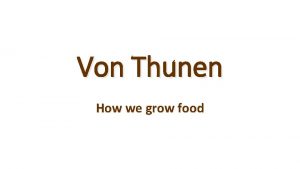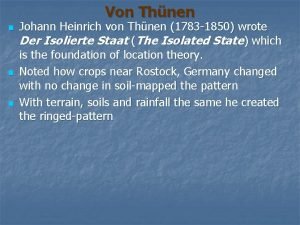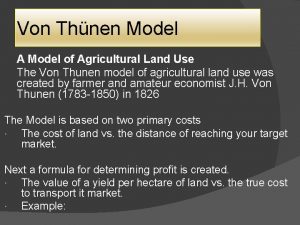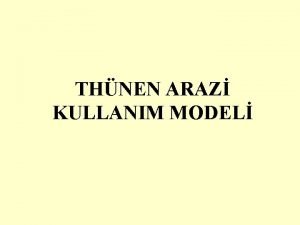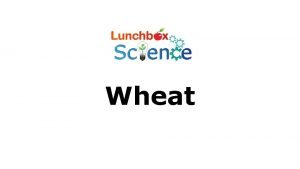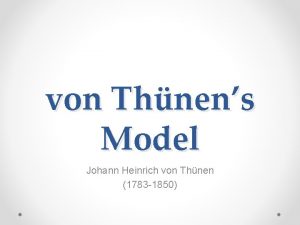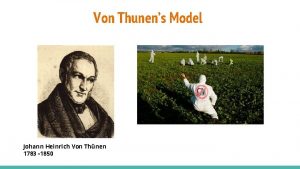VON THNEN AND US APPLICATIONS WHEAT PRODUCTION WHEAT









- Slides: 9

VON THÜNEN AND US APPLICATIONS

WHEAT PRODUCTION (WHEAT BELT) • Winter Wheat production is in central plains (Great Plains, Midwest) • Summer Wheat production is in the Dakotas and plains of Canada (usually same corporation, same equipment just shipped North)

SOY PRODUCTION (SOY BELT) • Soy is produced in Iowa, Illinois, the Dakotas, and along the Mississippi River floodplains. • This reflects a change in cultural and dietary attitudes in the US (soy milks, soy based meatless products, rise of veganism/vegetarianism)

CORN PRODUCTION (CORN BELT) • Also in similar corridor for soy. • Ethanol Plants reflect Least Cost Theory (corn is heavier than gas/liquid ethanol, which is used in fuel production) • Corn belt also is on edges of cattle production for use as feed for cattle/dairy farms

CORN AND DAIRY CATTLE • Notice the Corn Belts position relative to the historic Dairy Belt (Great Lakes) and newer SW Dairy Belt • Corn is used as feed for these cattle

RANCHING (CATTLE) • Only the Rockies represent a major hole in the cattle industry in the US • Industrial cattle production and mixed-crop and livestock agriclture reflect the widespread distribution of cattle in the US

FOREST COVERAGE • The Great Plains and Rockies are regions void in forest coverage, reflected in cultural traditions in folk housing (sod, thatch) • As forest is no longer a major source of fuel, coverage has seen a slight return in the late 1900’s

FRUITS IN THE US • The fruit types are dependent largely upon growing seasons and regional variations in temperature and rain

US CROPS AND VON THÜNEN • Using von Thünen allows us to determine if predictions would be applicable (Market is NE/East Coast) • Dairy forms a ring around Great Lakes and major markets (ring 1) • Horticulture and market gardening (fruits/veggies) are largely dependent upon climate so von Thünen is less applicable (ring 1) • Forest covers most of Appalachia and East Cost (ring 2) • Wheats, corn, soy, and other grains are within the great plains (ring 3) • Cattle for meat (ranching) covers great plains and surrounding states (SW, Texas) which does not fully fit (ring 4), but is close enough

